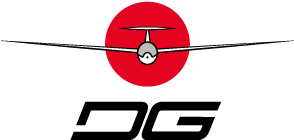Training for that moment when every second counts
By Val Paget – taken from AOPA, USA and SSA.org
When an emergency occurs in flight, three skills are in great demand: situational awareness, creative problem solving, and energy management. One doesnt have to be flying a large aircraft with 155 people over a crowded urban environment to recognize the value of developing these skill sets.
Piloting an Airbus 320, US Airways Capt. Chesley B. Sully Sullenberger made a successful emergency landing on the Hudson River after the loss of engine power essentially turned the airliner into a giant glider. This was not his first glider landing. Along with thousands of hours as pilot in command and a career as a safety expert, the captain holds a glider rating.
A spokesman for US Airways said that it is difficult for ditching to be replicated in a flight simulator. According to media reports, a US Airways pilot who has flown the A320, said that the chances of ditching are rare and that pilots dont routinely practice the maneuver beyond ground school.
Glider pilots develop a unique situational awareness. Glider instructors drill their students about landing decisions: At 2,000 feet agl, out of glide range, pick a spot. At 1,500 feet agl, commit to that spot. Glider pilots train to think outside the box. If a river is the best solution, they can immediately commit to landing there before too much altitude is lost.
U.S. Air Force Capt. Danny Sorenson, who instructs in F-16s, is a glider pilot. He stated, As a result of my glider training, Im always thinking, Where can I land this thing? He also noted that during his F-16 training, simulated flame-outs were never a problem for him, Its instinctive, he said. Id just fly my pattern and glide in.
Instincts like this save precious seconds. When Sullenberger took the controls, the aircraft was a glider, at 3,200 feet over New York City.
Mark Montague, a captain currently flying 767-757s for United Airlines and a certificated flight instructor-glider (CFIG), observed, Glider flying promotes the sort of informed self-reliance that is essential in successfully handling any emergency. Having taken off, a glider pilot is of course obligated to landaren’t we all?but can’t count on having the option of diverting to an alternate or of delaying the landing. It doesn’t matter how turbulent it is on final, or how vicious the crosswinds might be; the landing must be accomplished. Gliding is full of opportunities such as this to test oneself, to unblinkingly measure one’s ability against one’s self-confidence.
In a glider, every landing is a dead stick approach. Energy management is everything. Pilots carry energy in the form of speed and altitude. Theres only a finite amount of energy to use before the plane will land. The goal is to keep enough speed in the turns, pull spoilers to dissipate the energy, use ground effect, and touch down exactly as planned. More wind than expected? Cut the approach short. More altitude than needed? Slip it in. Stall-spins are more likely if a pilot panics. Learning to deal with energy issues gives the pilot the confidence to face emergencies with equanimity. With practice, effective energy management becomes instinctive and gives pilots a real edge in emergencies.
Glider training provides real insight as to exactly how and why an aircraft flies. As compared to most other heavier-than-air aircraft, a sailplane is large for its speed. The dimensions of the glider are not negligible when compared to the radius of a curved flight path. This means that in maneuvering flight, the various parts of the airframe are moving with markedly different speeds and directions, Montague stated. Because of this, a glider exaggerates all the subtle nuances of aircraft handling: adverse aileron yaw, the tendency to overbank in turns, the penalty for poor coordination of the controls, and so on.
A good grounding in these details is worth its weight in gold when a pilot is suddenly faced with the need to operate at the very edge of the envelope or to do anything that falls outside of the canned profiles practiced in the simulator.
For more information about soaring and soaring operations in your area, see The Soaring Society of Americas Web site.
January 22, 2009
